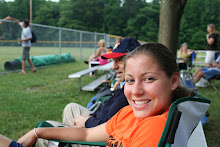For my portfolio long term project for this class I am going to continue along with the same theme as Sequence as a Story. However, I am going to go much more in-depth with my shooting, and focus on water to the fullest. I am pulling inspiration and ideas from these three artists: Clark Little, Harold Edgerton, and William Neill. I would like to use my camera as a way to capture images that we don’t normally see with our naked eye.
First, time exposures offer endless opportunities to get interesting and cool results. I am interested in shooting time exposures of moving water as it glides over rocks and sand. Ocean, lakes, rivers, bays, puddles, rain, clouds, fog and ice are all variations of water I would like to explore. Because this is a semester long project, I am able to show all of these different stages of water, from ice to warmer water. I like William Neill’s images of moving water. They give off a ghostly feel which I would like to imitate.
Clark Little shoots most of his images from in the ocean. That concept interreges me, and I would like to try something similar. This isn’t going to happen in February because the ocean temperature is around 36. In April, temperatures should reach a high of 50, so I will attempt this later on in the semester. I understand that he shoots in Hawaii where the water is beautiful and clear and colorful; this is why I won’t be doing underwater shooting, but shooting above the surface. I will try to go out with my wide angle lens. I will use like five of the best plastic bags I can find, and cut out around the lens opening and duct tape.
Finally, I will use Harold Edgerton as inspiration because I want to try to ‘stop the action’ of water. I understand that he used fast strobes in his work the pause action. First, I will try to just take images using a faster speed film and as fast of a shutter speed as the light will allow. After that, maybe I will try to bring some flashes into the images to freeze the frame.
All of my concepts are involving the interaction of light and water. How does the lighting situation change the look of water? How does the shutter speed change the look of the image of water? How does the result change with shooting position change from in water to out of water? These are questions I would like to look further into and answer using photographs. After I have taken film shots, I think it would be fun and beneficial to scan them and manipulate them digitally. I am using these three photographers as inspiration to develop images similar to their; however, I want these starting points to branch off and grow into my own ideas and impressions of light.
Subscribe to:
Post Comments (Atom)

No comments:
Post a Comment